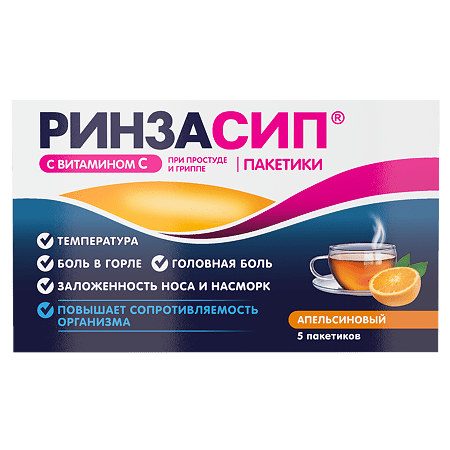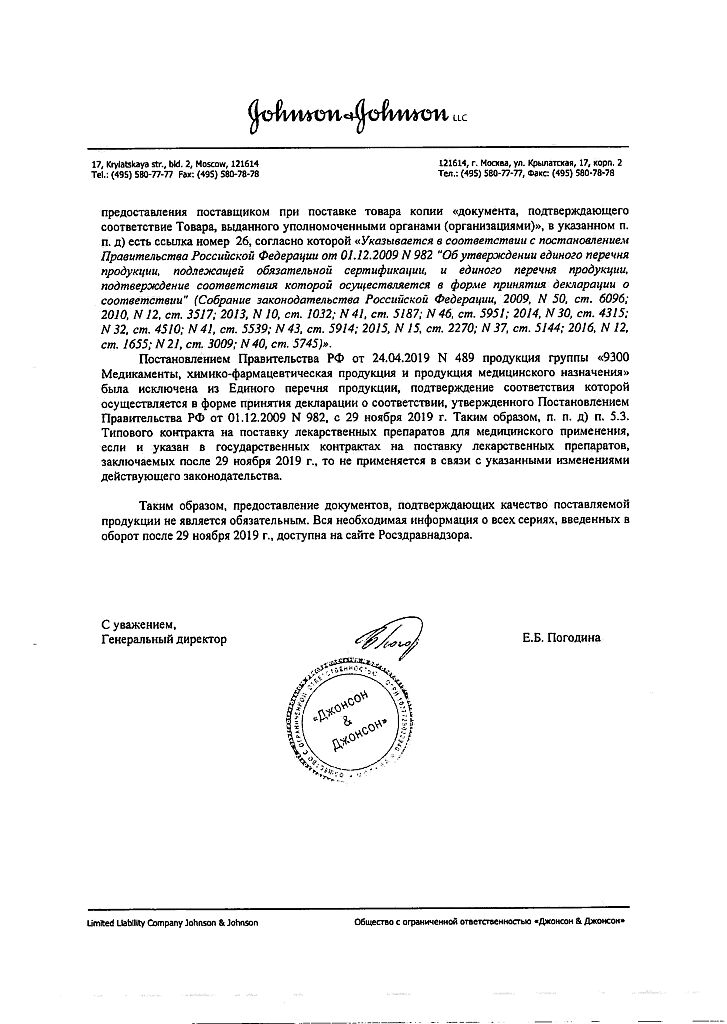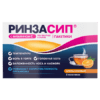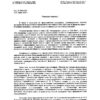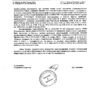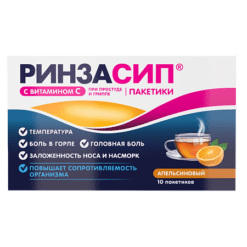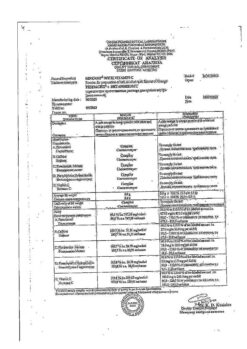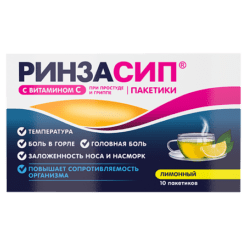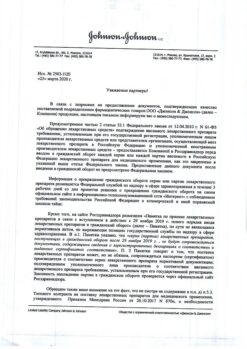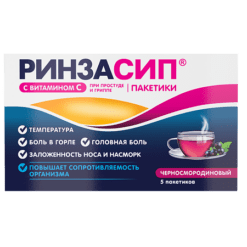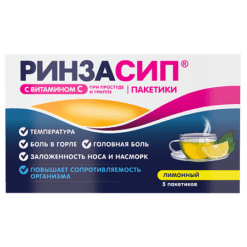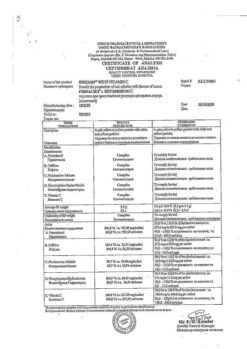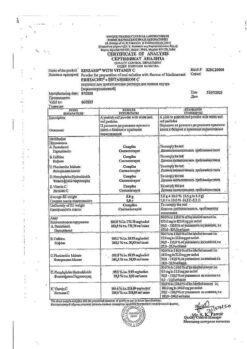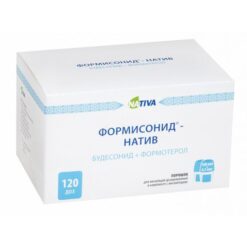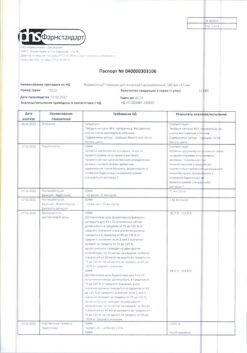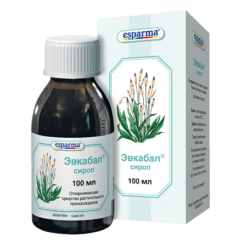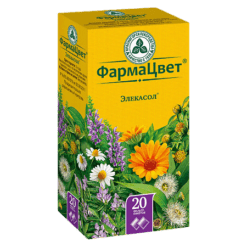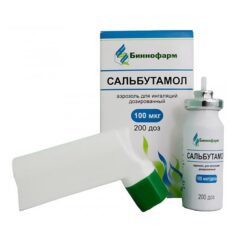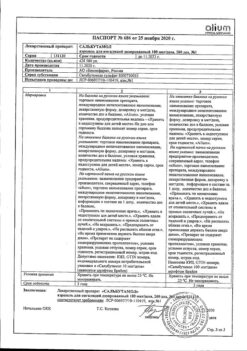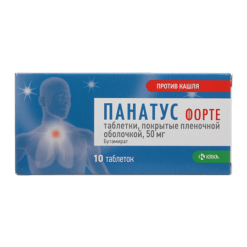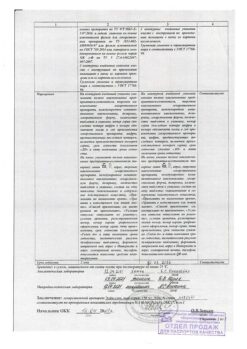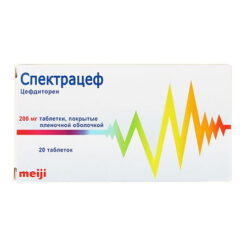No products in the cart.
Rinsasip with Vitamin C Orange, 5 g 5 pcs
€9.22 €7.68
Description
Symptomatic treatment of “colds”, flu, acute respiratory infections (febrile syndrome, pain syndrome, rhinorrhea).
Indications
Indications
Symptomatic treatment of colds, flu, acute respiratory viral infections (fever, pain, rhinorrhea).
Special instructions
Special instructions
During treatment you should refrain from drinking alcohol.
If symptoms worsen or persist for more than 5 days, or if new symptoms appear, you should consult your doctor.
The drug may cause drowsiness.
The drug contains sucrose, which must be taken into account by patients suffering from diabetes mellitus, as well as those on a hypocaloric diet.
1 single dose of the drug contains from 2915.0 to 3136.0 mg of sucrose, which corresponds to 0.24-0.26 XE.
Keep out of the reach of children.
If the drug is swallowed by a child, seek immediate medical attention.
If the medicine has become unusable or has expired, do not throw it into wastewater or onto the street! Place the medication in a bag and place it in the trash. These measures will help protect the environment!
Active ingredient
Active ingredient
Paracetamol, Ascorbic acid, Caffeine, Pheniramine, Phenylephrine
Composition
Composition
1 sachet (5 g) contains
Active ingredients:
ascorbic acid (vitamin C) – 200 mg,
caffeine – 30 mg,
paracetamol – 750 mg,
pheniramine maleate 20 mg,
phenylephrine hydrochloride 10 mg,
Excipients:
citric acid – 200 mg,
sodium saccharinate – 40 mg,
sodium citrate – 500 mg,
sucrose – 3062.5 mg,
sunset yellow dye (E110) – 7.5 mg,
orange flavoring – 150 mg.
Pregnancy
Pregnancy
Due to the lack of clinical data, the safety of the drug during pregnancy and breastfeeding has not been established, therefore the use of the drug in this category of patients is contraindicated.
Contraindications
Contraindications
Severe atherosclerosis of the coronary arteries, portal hypertension, simultaneous use of tricyclic antidepressants, beta-blockers, monoamine oxidase inhibitors (MAO) and discontinuation of their use less than 2 weeks ago;
Sucrase/isomaltase deficiency, fructose intolerance, glucose-galactose malabsorption;
Hypersensitivity to individual components of the drug, as well as to sympathomimetic drugs;
Simultaneous use of medications containing substances included in the drug;
Pregnancy, lactation period, children under 15 years of age, alcoholism.
Side Effects
Side Effects
Allergic reactions: skin rash, itching, urticaria, angioedema, hypersensitivity reaction, anaphylactic reaction.
From the nervous system: headache, dizziness, difficulty falling asleep, insomnia, drowsiness, increased excitability.
From the cardiovascular system: increased blood pressure, tachycardia, palpitations.
From the digestive system: nausea, vomiting, pain in the epigastric region, dryness of the oral mucosa, increased activity of liver enzymes, hepatotoxic effect.
From the senses: mydriasis, accommodation paresis, increased intraocular pressure.
From the hematopoietic organs: anemia, thrombocytopenia, agranulocytosis, hemolytic anemia, aplastic anemia, methemoglobinemia, pancytopenia.
From the urinary system: nephrotoxicity (renal colic, glycosuria, interstitial nephritis, papillary necrosis), difficulty urinating.
Other: bronchospasm, dry nasal mucosa.
Serious skin reactions:
Very rare:
– Acute generalized exanthematous pustulosis (AGEP). Acute condition with the development of pustular rashes. It is characterized by fever and diffuse erythema, accompanied by burning and itching. Swelling of the face, hands and mucous membranes may occur;
– Stevens-Johnson syndrome (SJS) (malignant exudative erythema). A severe form of erythema multiforme, in which blisters appear on the mucous membrane of the mouth, throat, eyes, genitals, and other areas of the skin and mucous membranes.
– Toxic epidermal necrolysis (TEN, Lyell’s syndrome). The syndrome is a consequence of extensive apoptosis of keratinocytes, which leads to the peeling of large areas of skin at the dermoepidermal junction. The affected skin looks like it has been scalded by boiling water.
If you notice one of the side effects described above, you should stop taking the drug and consult a doctor immediately!
Interaction
Interaction
Enhances the effects of monoamine oxidase inhibitors (MAO), sedatives, ethanol.
When taken with digoxin or other cardiac glycosides, the risk of arrhythmia and myocardial infarction may increase.
Antidepressants, antiparkinsonian drugs, antipsychotic drugs, phenothiazine derivatives increase the risk of developing urinary retention, dry mouth, constipation.
Glucocorticosteroids increase the risk of developing glaucoma.
Microsomal oxidation inhibitors (cimetidine) reduce the risk of hepatotoxicity.
Metoclopramide and domperidone increase, and cholestyramine reduces the rate of absorption of paracetamol. Paracetamol reduces the effectiveness of diuretic and uricosuric drugs.
When administered simultaneously with barbiturates, diphenin, carbamazepine, rifampicin and other inducers of microsomal liver enzymes, the risk of developing the hepatotoxic effect of paracetamol increases.
In most patients taking warfarin long-term, infrequent use of paracetamol usually has little or no effect on the international normalized ratio (INR). However, with prolonged regular use, paracetamol enhances the effect of indirect anticoagulants (warfarin and other coumarin derivatives), which increases the risk of bleeding.
A single dose of caffeine increases lithium excretion by the kidneys. Abrupt cessation of caffeine intake may result in increased serum lithium concentrations.
When taken simultaneously with monoamine oxidase inhibitors (MAOIs), furazolidone, pheniramine can lead to hypertensive crisis, agitation, and hyperpyrexia.
When taken with MAO inhibitors, phenylephrine may increase blood pressure.
Phenylephrine reduces the effectiveness of beta blockers and antihypertensive drugs.
It also reduces the hypotensive effect of guanethidine, which, in turn, enhances the alpha-adrenomimetic activity of phenylephrine.
Tricyclic antidepressants enhance the adrenomimetic effect of phenylephrine; simultaneous administration of halothane increases the risk of developing ventricular arrhythmia.
Overdose
Overdose
In case of overdose, consult a doctor immediately.
Prompt medical attention is critical, even if you do not notice any signs or symptoms.
Ascorbic acid:
Symptoms of acute overdose: diarrhea and other gastrointestinal disorders.
Symptoms of chronic intoxication with ascorbic acid: impaired excretory function of the kidneys, formation of kidney stones, decreased capillary permeability (possible deterioration of tissue trophism, increased blood pressure, hypercoagulation, development of microangiopathies, impaired iron metabolism), erosion of tooth enamel.
Caffeine:
Symptoms of acute overdose: abdominal pain, nausea, vomiting, fever, chills, headache, agitation, insomnia, irritability, loss of appetite, weakness, tremor, anxiety, state of altered consciousness, delirium, hallucinations, increased blood pressure followed by hypotension, tachycardia, tachypnea, hypokalemia, hyponatremia, hyperglycemia, metabolic acidosis, epileptic seizures, convulsions, myoclonus and rhabdomyolysis, supraventricular and ventricular arrhythmias.
Symptoms of chronic caffeine intoxication (“caffeineism”): irritability, insomnia, anxiety, emotional lability, chronic abdominal pain.
Pheniramine:
Symptoms: central nervous system depression, hyperthermia, anticholinergic syndrome (mydriasis, flushing, fever, dry mouth, urinary retention, intestinal paresis), tachycardia, hypotension, hypertension, nausea, vomiting, psychomotor agitation, disorientation, hallucinations, psychosis, convulsions, arrhythmias.
Rarely, patients with agitation, seizures, or comatose patients develop rhabdomyolysis and renal failure.
Phenylephrine:
Symptoms: headache, nausea, vomiting, irritability, agitation, insomnia, psychosis, convulsions, palpitations, tachycardia, increased blood pressure, reflex bradycardia.
Paracetamol:
Symptoms appear after taking more than 7.5-10 g: during the first 24 hours after taking – pallor of the skin, nausea, vomiting, anorexia, abdominal pain, increased prothrombin time, impaired glucose metabolism, hypokalemia, metabolic acidosis (including lactic acidosis).
Symptoms of liver dysfunction may appear 12-48 hours after an overdose: increased activity of liver transaminases, hepatonecrosis. In severe cases – liver failure with progressive encephalopathy, coma. Rarely, liver failure develops suddenly and can be complicated by renal failure (tubular necrosis).
The threshold for overdose may be lowered in elderly patients and children, in patients taking certain medications (eg, liver microsomal enzyme inducers), alcohol, or who are malnourished.
Treatment: gastric lavage, administration of activated charcoal in the first 6 hours after an overdose, administration of SH-group donors and precursors for the synthesis of glutathione – methionine 8-9 hours after an overdose and acetylcysteine - 12 hours later. The need for additional therapeutic measures (further administration of methionine and acetylcysteine) depends on the concentration of paracetamol in the blood, as well as on the time elapsed after its administration. Symptomatic therapy.
Clinical pharmacology
Clinical pharmacology
Pharmacodynamics:
A combined drug that has antipyretic, analgesic, alpha-adrenergic stimulating, vasoconstrictor and antihistamine effects, eliminates the symptoms of “colds”.
Paracetamol is a non-narcotic analgesic; blocks cyclooxygenase (COX), mainly in the central nervous system, affecting the centers of pain and thermoregulation; has analgesic and antipyretic effects.
Phenylephrine is an alpha-adrenergic agonist with a moderate vasoconstrictor effect. Reduces swelling and hyperemia of the mucous membranes of the upper respiratory tract and paranasal sinuses.
Pheniramine is a blocker of H1-histamine receptors. Has an antiallergic effect: eliminates itching of the eyes, nose and throat, swelling and hyperemia of the mucous membranes of the nasal cavity, nasopharynx and paranasal sinuses, reduces exudative manifestations.
Caffeine has a stimulating effect on the central nervous system, enhances the effect of analgesics, eliminates drowsiness and fatigue, increases physical and mental performance, reduces fatigue and drowsiness.
Ascorbic acid (vitamin C) is involved in the regulation of redox processes, carbohydrate metabolism, blood clotting, tissue regeneration, and in the synthesis of steroid hormones; reduces vascular permeability and increases the body’s resistance to various adverse environmental factors.
Short product description
Short product description
Helps relieve the main symptoms of colds, ARVI and flu, because contains a complex of active components.
Storage conditions
Storage conditions
Store in a dry place at a temperature not exceeding 25 °C.
Keep out of the reach of children.
Shelf life
Shelf life
3 years
Manufacturer
Manufacturer
Unique Pharmaceutical Laboratories, India
Additional information
| Shelf life | 3 years |
|---|---|
| Conditions of storage | Store in a dry place at temperatures not exceeding 25 ° C. Keep out of reach of children. |
| Manufacturer | Unique Pharmaceutical Laboratories, India |
| Medication form | Powder for preparation of solution for oral administration |
| Brand | Unique Pharmaceutical Laboratories |
Other forms…
Related products
Buy Rinsasip with Vitamin C Orange, 5 g 5 pcs with delivery to USA, UK, Europe and over 120 other countries.

